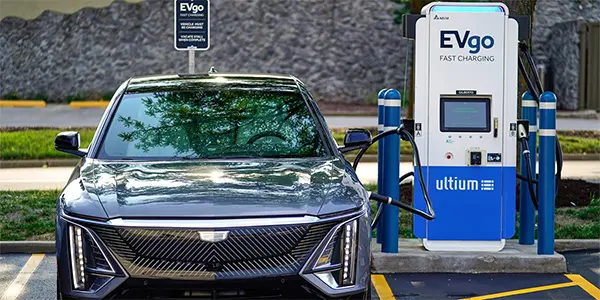In a world increasingly driven by sustainability, the rapid evolution of electric vehicles (EVs) marks a pivotal shift in urban transportation. As of 2023, global EV sales have surged by 50% compared to the previous year, according to InsideEVs. However, the true game-changer lies in the development of fast charging hubs — the backbone of urban EV infrastructure. These hubs are transforming how we think about refueling and are crucial for widespread EV adoption. In this article, we’ll explore how fast charging hubs are revolutionizing urban infrastructure and what it means for the future of mobility.
The Rise of Fast Charging Hubs
What Are Fast Charging Hubs?
Fast charging hubs are centralized stations equipped with multiple high-speed chargers capable of delivering rapid electricity to electric vehicles. Unlike traditional charging stations, these hubs can charge an EV to 80% in under 30 minutes, thanks to advanced technologies like DC fast charging. According to CleanTechnica, the number of fast charging stations in urban areas is expected to grow by 40% annually, driven by increased EV adoption and technological advancements.
Why Are They Important for Urban Areas?
- Efficiency and Convenience:
– Fast charging hubs reduce waiting times, allowing EV owners to quickly recharge during errands or lunch breaks.
– Their strategic placement in urban centers minimizes detours, integrating seamlessly into daily routines.
- Supporting Grid Infrastructure:
– These hubs often incorporate smart grid technologies, balancing energy load and utilizing renewable sources.
– By managing peak demand, they contribute to a more resilient and sustainable urban energy grid.
Key Players and Innovations
Companies like Tesla, Rivian, and Volkswagen are at the forefront of developing these hubs. Tesla’s Supercharger network, for example, is renowned for its expansive reach and speed, setting a benchmark for others to follow. According to Electrek, Tesla plans to open its network to non-Tesla vehicles, further enhancing accessibility. Meanwhile, Rivian’s Adventure Network focuses on less urbanized areas, providing fast charging in remote locations, which indirectly supports urban hubs by offering comprehensive coverage.
The Technological Backbone
DC Fast Charging and Beyond
DC fast charging is the cornerstone of fast charging hubs, capable of delivering up to 350 kW of power. This technology drastically reduces charging times compared to the conventional Level 2 chargers, which provide between 3-20 kW. As per MIT Technology Review, advancements in solid-state batteries are expected to further enhance charging speeds and efficiency, potentially offering full charges in minutes.
Integration with Renewable Energy
Fast charging hubs are increasingly integrating solar panels and battery storage systems to draw energy sustainably. According to PV Magazine, these systems not only reduce the carbon footprint but also provide energy resilience during grid outages. By harnessing solar power, urban charging hubs can operate independently during peak times, aligning with global sustainability goals.
Practical Tips for Urban EV Users
How to Use Fast Charging Hubs
- Locate Nearby Hubs: Use apps like PlugShare and ChargePoint to find fast charging hubs close to you.
- Plan Your Charging: Schedule charging sessions during off-peak hours to avoid congestion and potentially lower costs.
- Understand Your Vehicle’s Capacity: Not all EVs support the highest charging speeds. Check your vehicle’s specifications to optimize charging time.
Where to Find the Best Hubs
- Retail Centers: Many shopping malls and retail centers have installed fast charging hubs to attract eco-conscious shoppers.
- Workplaces: Companies are increasingly offering fast charging facilities as part of employee benefits.
- Highway Corridors: For those commuting longer distances, highway charging hubs provide quick top-ups to ensure smooth travel.
What to Compare When Choosing a Hub
- Charging Speed: Look for hubs offering the highest compatible charging speed for your EV model.
- Cost and Membership Plans: Some hubs require subscriptions or offer pay-as-you-go options. Compare to find the most economical choice.
- Additional Amenities: Some hubs offer lounges, Wi-Fi, and retail discounts, turning charging time into a pleasant break.
The Future of Fast Charging Hubs
Fast charging hubs are not just a temporary solution but a glimpse into the future of urban mobility. As technology evolves, these hubs will become even more efficient and integrated into the urban landscape. Expect innovations like wireless charging and AI-driven energy management systems to emerge, further streamlining the EV experience.
Conclusion: Embracing the Future
Fast charging hubs are undeniably revolutionizing urban EV infrastructure by offering speed, convenience, and sustainability. As cities continue to grow and evolve, the importance of these hubs will only increase, driving the transition to a cleaner, more efficient future. Are you ready to embrace this electrifying change? Share your thoughts in the comments below and join the conversation about the future of urban mobility. As we look ahead, the expansion of fast charging hubs promises to not only support but accelerate the global shift towards electric vehicles, ensuring a brighter and more sustainable tomorrow.

